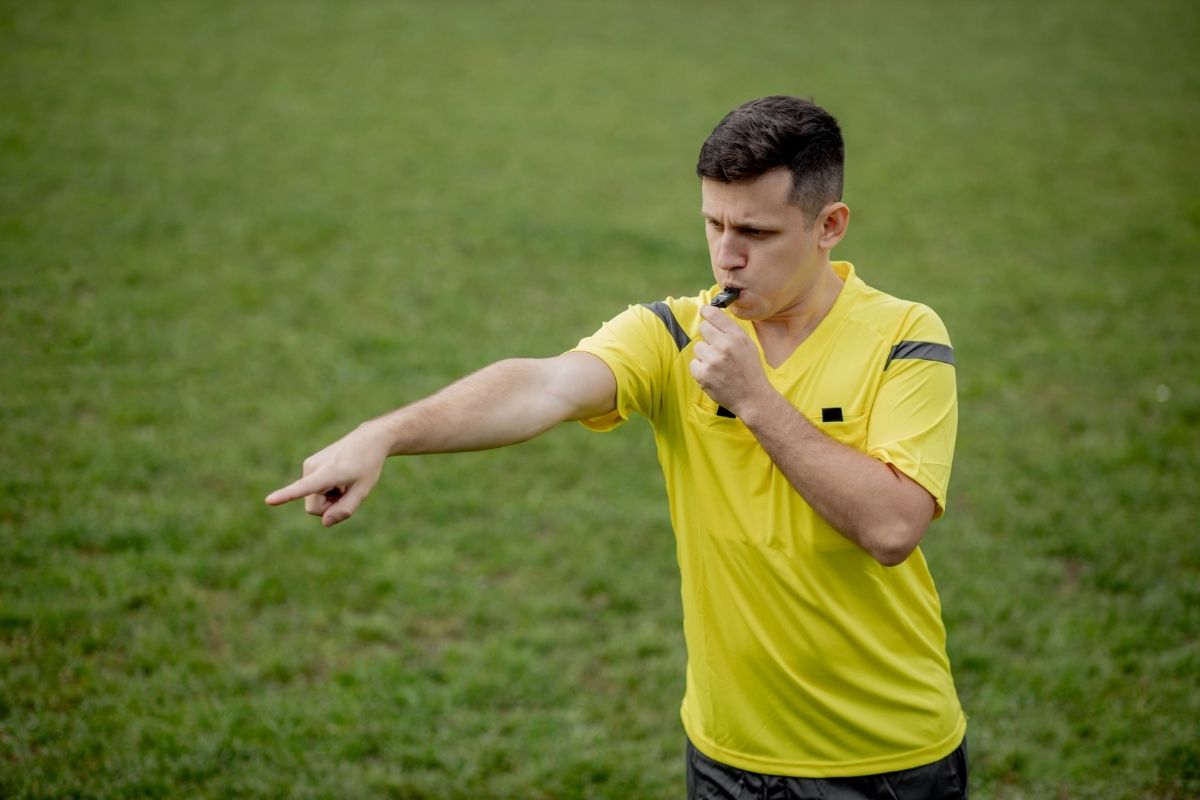A fun way to shake up your usual basketball game is to try playing half-court basketball instead.
Half-court basketball is a type of basketball game that only uses half of the space used in a regular sized basketball court and thus, it’s a great way to make the game easier if you are limited on space or players – but how else does it differ from regular basketball?


Here we are going to be covering four important rules that help differentiate half-court basketball from regular basketball.
Keep these rules in mind next time you want to play half-court basketball so you can understand just how different the two types of basketball are!
The ‘Clear The Ball’ Rule
This rule is one of the biggest differences between regular basketball and half-court basketball.
In regular basketball, there is no ‘clear the ball’ rule while in half-court basketball, it is an important rule to follow or you risk committing a foul.
The ‘clear the ball’ rule works when the defensive team gains possession of the ball through a turnover or when the ball rebounds from a missed goal attempt by the offensive team.
When the defensive team now has possession of the ball, they must clear the ball by traveling via dribbling or passing it outside of the court’s arc. Once this is done, they can begin their offensive possession and try to score a basket.
The reason why the ‘clear the ball’ rule exists is because both teams are trying to score the ball into the same basket.
In regular basketball, both teams have their own designated hoops on either side of the court. When a different team gains possession of the ball, they have to travel in the opposite direction to the opposing team to score.
So, because both teams are trying to score in the same hoop in half-court basketball, the team in possession has to first ‘attack’ the hoop before they can score.
Otherwise, both teams would just stay near the hoop and constantly try to throw the ball and catch it.
The ‘clear the ball’ rule helps both teams play attacking and defending positions just like in regular basketball.
The Points Rules Differences
The point from where you shoot a hoop in basketball is actually very important because you can score more points from scoring at certain points on the court.
For example, scoring from behind the three-point line will reward you with three points on the scoreboard. Scoring from inside the arc will instead reward you with two points.
However, in half-court basketball, these points are changed. Scoring from behind the three-point line will instead reward you with two points, while a shot from within the arc will reward you with just one point.
This works to try and stop the scores in half-court basketball from reaching very high numbers.
Teams are more likely to score and rack up lots of points in half-court basketball because there is less area to cover while traveling and dribbling.
So, to help prevent this, each score is worth one point less than it does in full-court basketball.
The Coin Flip Rule


In full-court basketball, which team takes possession first is decided by a ‘jump ball’. This is when the referee tosses the ball up in the air and two players (one from each team) jump to try and catch it.
A ‘jump ball’ takes place mid-court on the half-court line. This line is out of bounds in half-court games so to decide possession, a coin toss is performed instead. The team that wins the coin toss is given possession of the ball first.
However, for foul shots, both are worth one point in half-court and full-court basketball.
The Time Limit Rule Change
Just like how half-court basketball is much more limited in space compared to full-court basketball, half-court basketball is also limited in terms of time as well.
NBA basketball games are divided into four quarters. Each quarter is timed at twelve minutes each and there is also a twenty four second shot clock.
In half-court basketball, this time is shortened down to ten minute periods and a twelve second shot clock. The much shorter shot clock forces the player to try and score a goal or they will have to turn over the ball to the other team’s possession.
This means that half-court basketball games are much shorter and also much faster in pace in regular basketball games because shots are constantly being made and possession being turned.
Other Differences Between Half-Court And Full-Court Basketball
So those are the major rule changes between half-court and full-court basketball, but they are not the only differences between these two sports.
The main obvious difference is the size of the court. Half-court basketball cuts the dimensions of the court into half, but the exact dimensions can vary depending on the court you are playing on.
Some half courts are more narrow than others, and some make up for this by making the court slightly longer to allow players a little more room to play.
Speaking of players, the number of players per team is also a key difference between half-court and full-court basketball.
Half-court basketball is played in teams of five, and this is sometimes used as a warm up or practice game for a team before a full-court basketball game.
The National Basketball Association (NBA) does not hold professional-level half-court basketball games but the International Basketball Federation (FIBA) and the Big3 both do, although the Big3 professional games must have teams of three players instead of five.
So, while full-court basketball is the more widely known of the two, it is possible to play half-court basketball games on a professional level too!
Conclusion
Playing half-court basketball is a great way to still enjoy your favorite sport while limited on space or players, but certain rules must be changed to keep the game fair and playable for all involved.
So, check out the above rule changes between half-court and full-court basketball, and apply them next time you want to play half-court basketball!
- Can You Play Pickleball on Grass? Tips and Tricks - June 12, 2023
- Do Pickleballs Wear Out? Everything You Need to Know - June 12, 2023
- Can You Play Pickleball on Concrete? A Guide to Playing on Hard Surfaces - June 12, 2023








